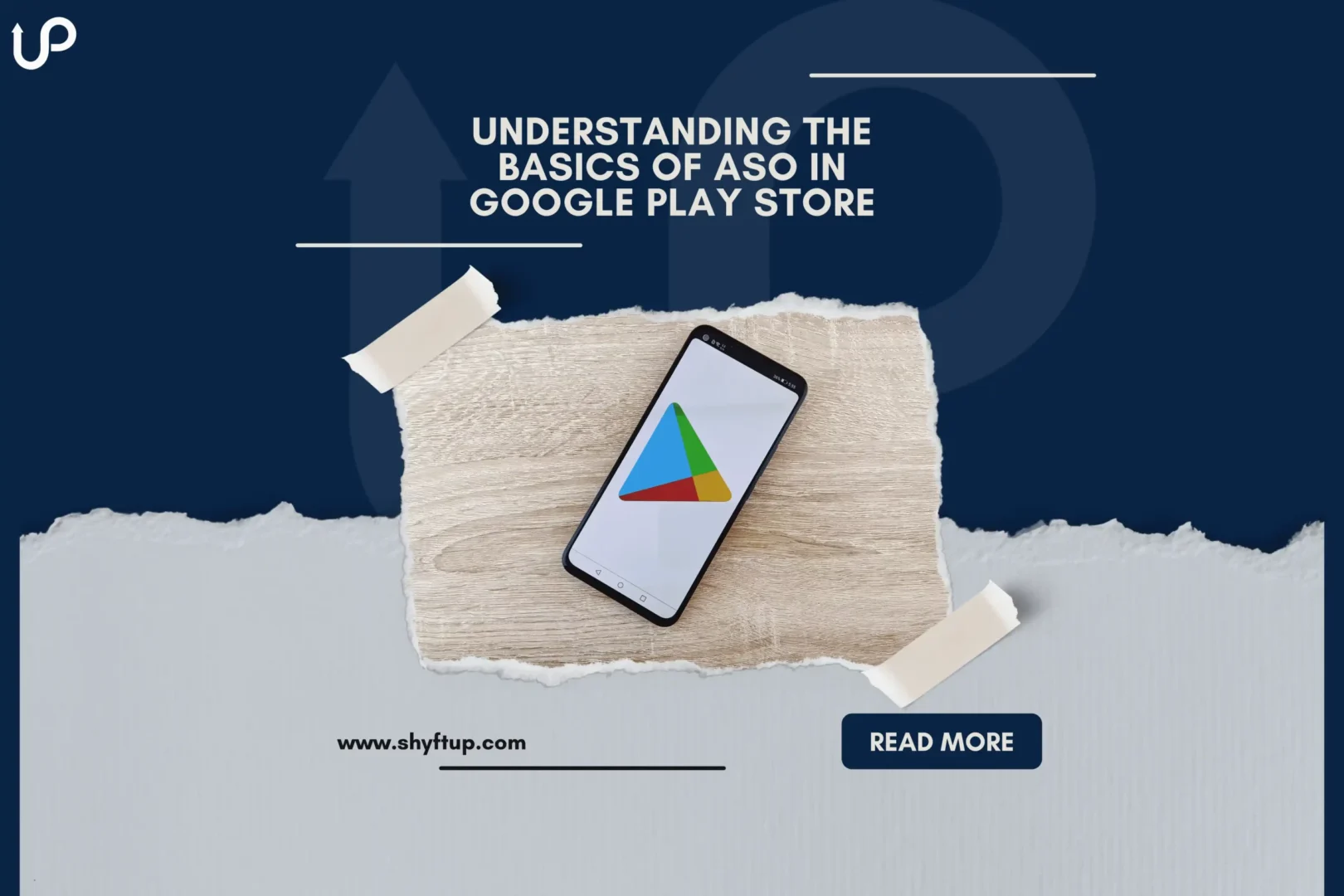
Understanding the Basics of ASO in Google Play Store
There are nearly 4 million apps available in Google Play Store with numbers drastically increasing every year. With so much competition, how can you ensure your app ranks at the top of search results? Understanding the basics of Google Play Store optimization will have a significant impact on how well your app ranks and the likelihood of high visibility. This guide will offer a comprehensive overview of Google Play ASO best practices and how you can implement them into your strategy.
Let’s dive in.
What is App Store Optimization?
At its most basic definition, ASO is the process of increasing app’s visibility in an app store with the overall goal of increasing organic downloads. By organic, we mean content that was not reached via paid ads but rather by taking advantage of readily available content optimization tools. The higher your app ranks in an app store’s search results, the more visible it becomes to potential customers.
The more visible your app becomes, the higher the conversation rate and overall engagement that can lead to more sales and downloads. After all, no one wants to spend months of hard work developing an app only for it to not be seen and downloaded.
SEO vs. ASO
We’ve all heard of SEO and the positive impact it has on allowing websites to reach larger audiences with better rankings in popular search engines like Google. ASO is not that much different, and it also requires a curated target audience, strategic keyword research, and some creativity.
A striking difference between SEO and ASO are the ranking factors and the fact that one is used for optimizing websites and the other for optimizing mobile apps. Another point to note is that SEO and ASO serve different target audiences, website results are mainly used to inform an audience on a specific topic while app store results are used to find apps that can fulfill a specific service or need.
Why is App Store Optimization Important?
You’ve likely invested a lot of time, money, and resources into delivering the best possible version of your app, so it’s only natural for you to want to reach as much of your target audience as possible. This is where App Store Optimization comes in. Nearly 40 percent of all apps are discovered through app store searches and the ones ranking at the top of the list are those that have implemented appropriate app store optimization practices. Here are some of the benefits of ASO:
- Higher Discoverability: Most search engine users rarely go past the second page of results, often choosing to engage with one of the top options within the first page. Proper ASO implementation will help your app reach higher page rankings and thus become more discoverable to audiences.
- Reach your Specific Target Audience: Because app store optimization utilizes specific keywords to narrow down searches, you can target specific audiences to your app based on what they are already looking for. We’ll take a deeper dive into keyword search and optimization below.
- Spend Less Money on Adds: With ASO, more people will find your app organically through quick searches rather than spending thousands of dollars on ads that may not ultimately deliver conversions. This will give your app more credibility as it will make it easily discoverable based on popularity rather than paid advertising.
- Increase App Revenue: The larger the audience reaches the higher the likelihood that your app will be downloaded and increase revenue. A higher download rate also improves overall ASO and ranking.
Google Play Store Optimization vs. App Store
Not one app store is better than the other as they both possess high quality standard criteria for all apps being uploaded into each respective platform. They do, however, implement different ASO ranking factors and user experiences. In Google Play Store, app descriptions play a more significant role in App Store Optimization. These descriptions tend to get more taps than those in the Apple App Store. This highlights the importance of implementing proper Google Play ASO when uploading your app into the platform as it will likely be read by a potential customer.
How to Implement ASO for Play Store
The Google Play Store optimization elements with the highest impact are app name, app description, URL, and keywords. In-app purchases, ratings, and downloads also play a significant role, but they are usually elements that are directly affected by the primary ASO elements and where you have the least control. So, how exactly can one appropriately apply ASO best practices?

Choose a Relevant Title
Your title must relate to the content or service being offered by your app as it is the first element that a potential customer will see in search results. Your title must also be unique, recognizable, and easy to remember. Thankfully, Google Play Store allows up to 30 characters in your title, so you have plenty of creative freedom to develop a profitable title.
It is imperative that you apply your primary keyword choice to this element. This keyword should be the one with the most search traffic and the word you would like your target audience to associate your app with the most. Try to avoid constantly changing your title as this can taint your overall Google Play ASO strategy and negatively affect your app’s ranking in the long run but do keep in mind that keywords can evolve and therefore might need to be changed in the future.
Find the Appropriate Keywords
What is a keyword? A keyword is a word or phrase that people use to search for information in a search engine, or in this case, apps in an app store. Keywords are an essential element of Google Play Store Optimization. These are the words and phrases that your target audience will be typing into the search bar and finding your app with, so it is important to select the most relevant ones to your niche or service offering.
Research your target audience and what relevant keywords they are searching for. There are also online tools and websites that can assist with keyword search and offer helpful statistics like search volume and ASO difficulty that can help you decide which keywords would yield better results. Lastly, research what keywords your competitors are optimizing to better strategize your Google Play ASO strategy.
Optimize Your Short Description
The short description part is the second most important element of your Google Play Store Optimization since it appears just below your title. Your short description should include the highly relevant and high search score keywords because, Google Play Store pays attention to the short description in its algorithm. Google Play Store allows you to use 80 characters for the short description so if you use the most descriptive and high relevant keywords, it would affect your visibility significantly.
Optimize Your App’s Description
The app description category is another essential element of Google Play Store Optimization. This section will inform your audience of what your app is about and an overview of its primary features. This is also a great place to insert relevant keywords and phrases that can improve ASO ranking since this is the area where Google finds the keywords to rank your app.
Google Play Store allows up to 4,000 characters for an app description and it’s one of the primary elements of your app that an audience will see below the app title. Adapt an informative tone that is easy to understand with eye-catching language.
Optimize Your App URL
The URL is one of the first things you should take into consideration because once its set it cannot be changed. Just like in the app description, keywords implemented into the app URL will increase the ranking factor in Google App Store search results.
Other Factors to Consider
Total number of downloads, ratings, ratings, and reviews all contribute to ASO for Play Store, but you don’t entirely have control over these factors other than the amount of effort you put into your App Store Optimization strategy. The higher you rank within relevant searches the more people will download your app and likely leave a review.
Conclusion
When it comes to Google Play Store optimization, your strategy approach can have a huge impact on your app’s visibility and overall ranking results. In this guide, we’ve taken a deep dive into the world of ASO and how you can implement it into your customer acquisition goals productively. In a saturated digital world, we hope these app store optimization tools will help you achieve your endeavors.At Shyftup, we strive to deliver results with data-driven strategies and the belief that any action we take needs to have an ROI-positive impact. Whether you are at the early stages of your Google Play ASO strategy or are lading a successful full-scale program, we are ready to take your efforts to the next level.
What is App Store Optimization?
ASO is the process of increasing an app or game’s visibility in an app store with the overall goal of increasing organic downloads. By organic, we mean content that was not reached via paid ads but rather by taking advantage of readily available content optimization tools. The higher your app ranks in an app store’s search results, the more visible it becomes to potential customers.
How are the most impactful elements for Google Play Store optimization?
The Google Play Store optimization elements with the highest impact are app name, app description, URL, and keywords. In-app purchases, ratings, and downloads also play a significant role, but they are usually elements that are directly affected by the primary ASO elements and where you have the least control.